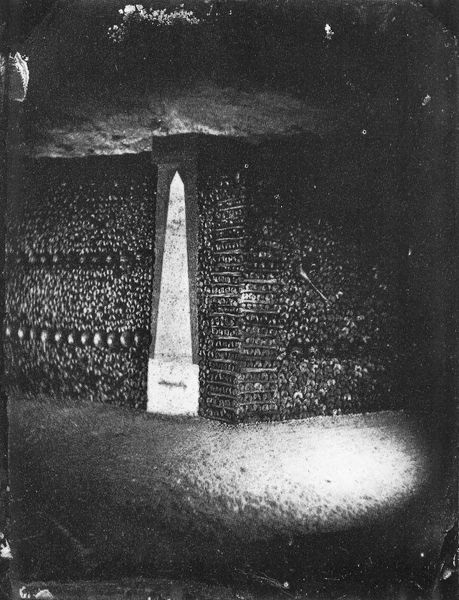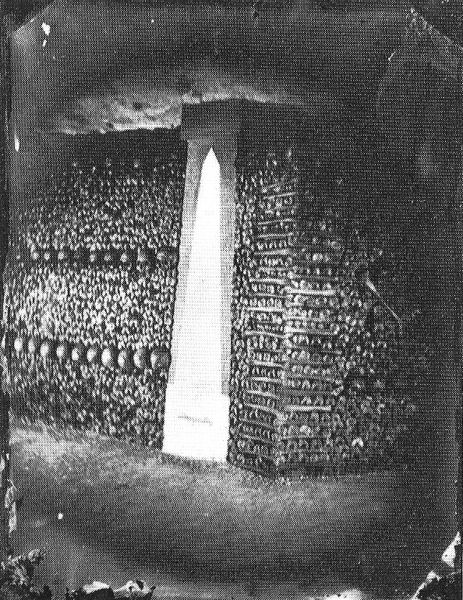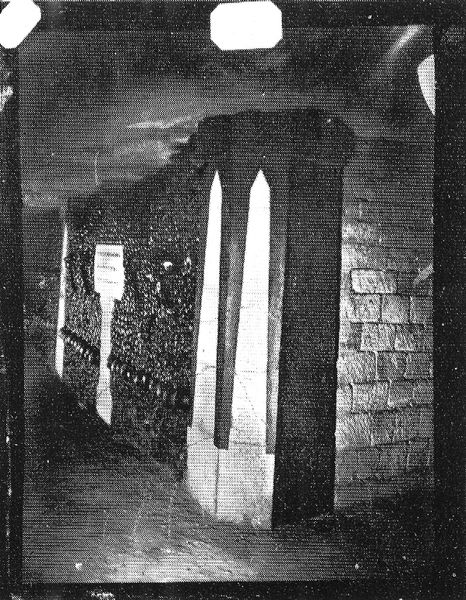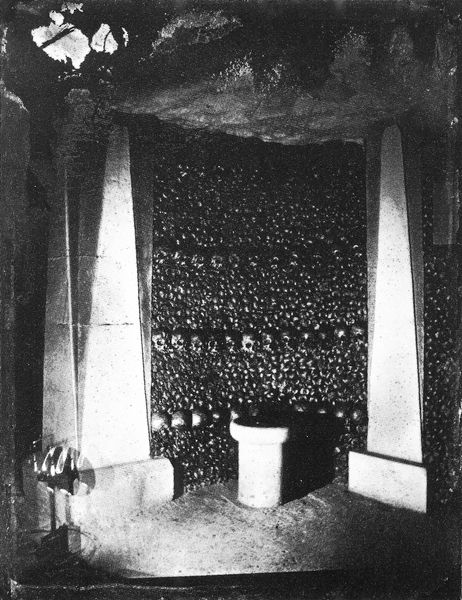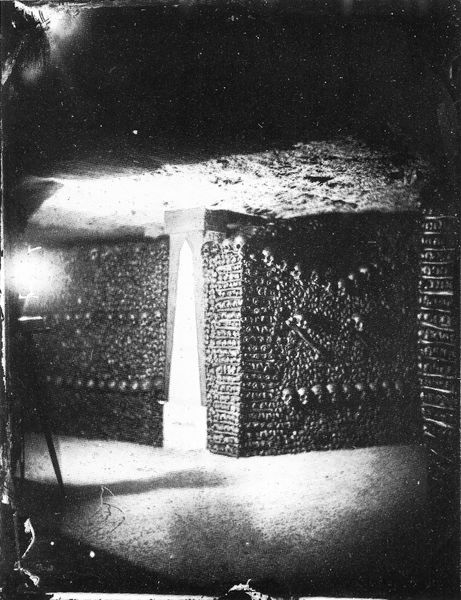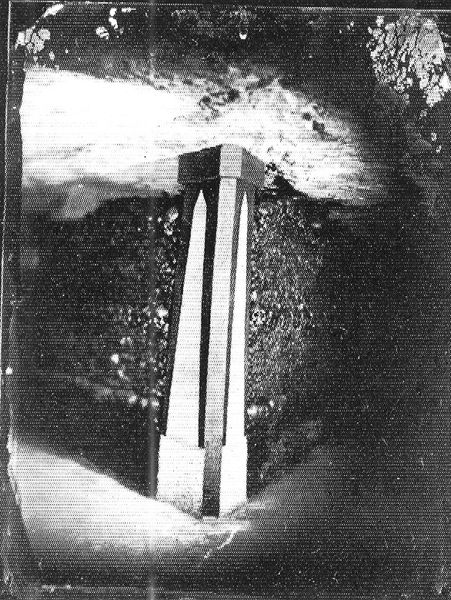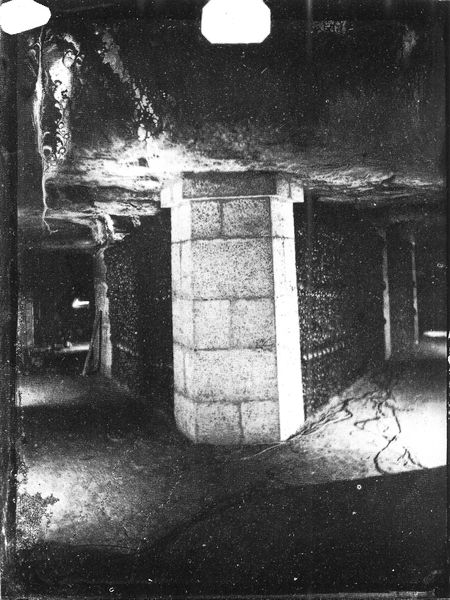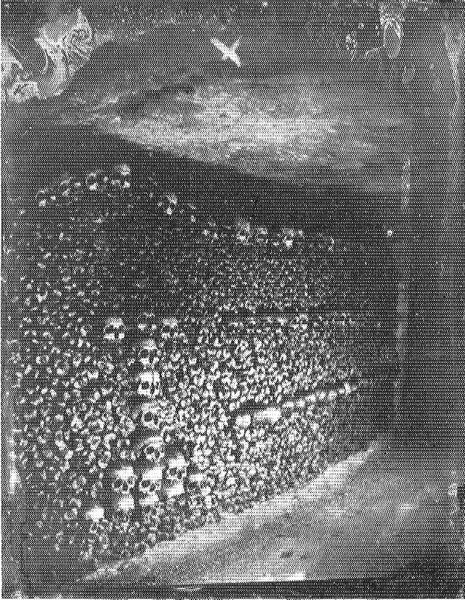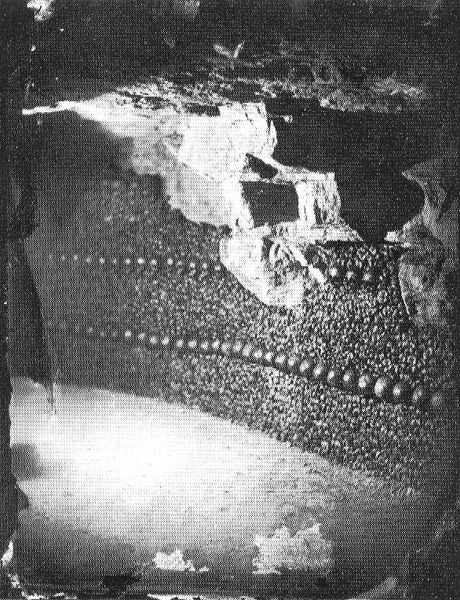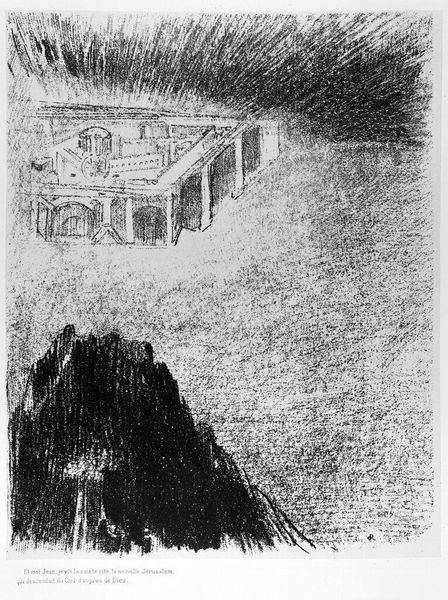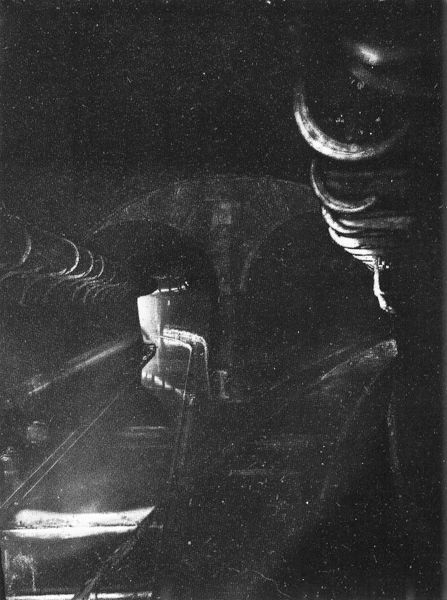
Copyright: Public domain
Editor: This is Felix Nadar's "Catacombes De Paris," taken in 1861. It's a gelatin silver print, and the first thing that strikes me is the eeriness of the space and the stark contrast of light and shadow. What can you tell me about it? Curator: Well, this image is significant as it's one of the first examples of underground photography, a feat achieved by Nadar's use of artificial light. The Catacombs themselves were a complex socio-political issue in 19th-century Paris. What do you think its intended audience and purpose might have been? Editor: Perhaps to document and shed light on what was hidden and forgotten beneath the glamorous surface of Paris? There's something unsettling, almost romantic, about it. Curator: Precisely! It speaks volumes about the relationship between urban development, public health, and historical memory. Remember, the Catacombs housed the remains of millions, moved from overcrowded cemeteries. Nadar’s photography wasn’t just capturing an image, but making a statement about the city's past and how it deals with death and disease. How do you think that commentary might relate to the contemporary art scene? Editor: That context gives the photograph so much more depth. It makes me think about contemporary artists using photography to document marginalized communities and forgotten spaces today, raising awareness through visibility. Curator: Exactly. Nadar, in his time, pushed the boundaries of both photographic technology and the public’s awareness of social realities. Editor: I had only thought of this photo as a historical artifact. I didn’t realize it made a strong statement about society. Curator: That's the beauty of looking at art through the lens of history! You start to see it not just as an image, but as an agent in a larger cultural conversation.
Comments
No comments
Be the first to comment and join the conversation on the ultimate creative platform.
